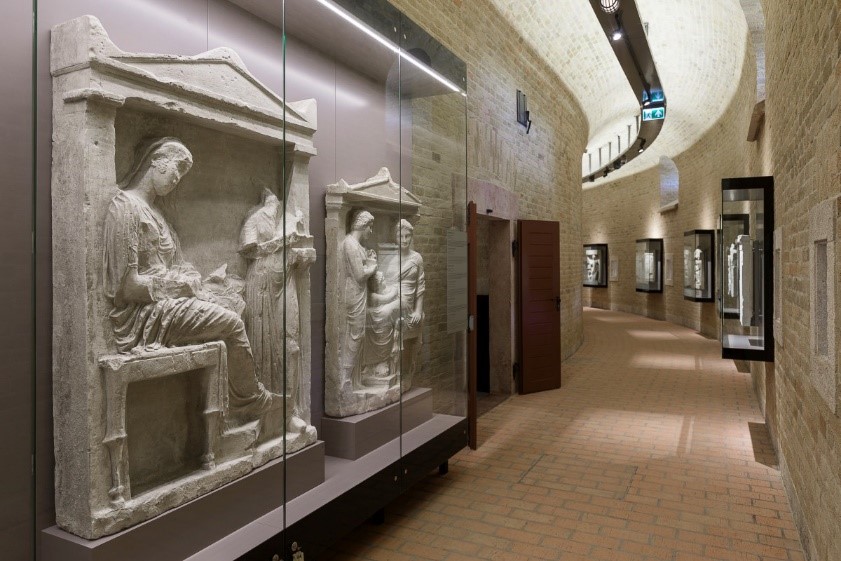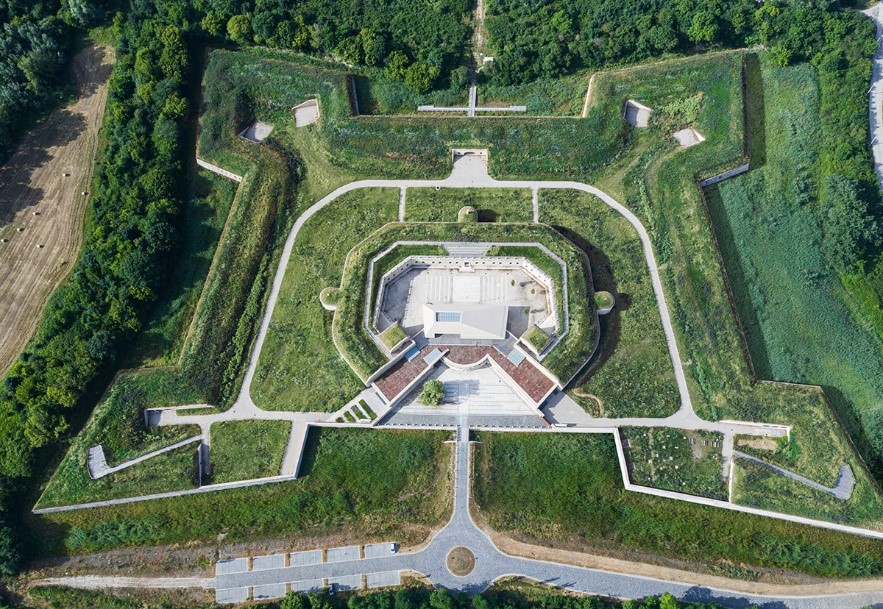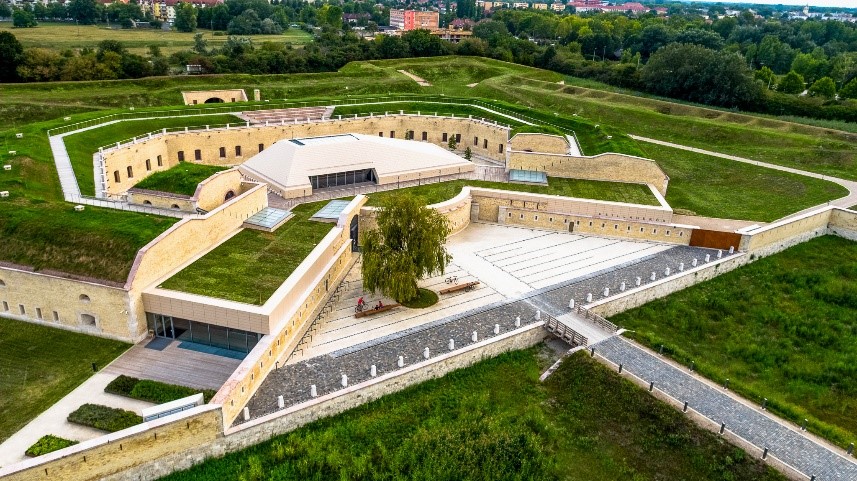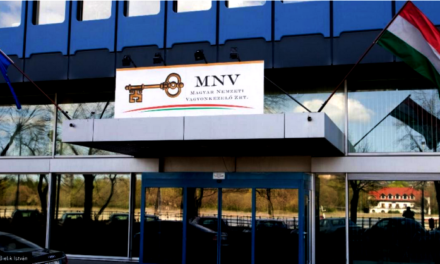The fully renovated and expanded Csillagerőd in Komárom opened with the exhibition of the Museum of Fine Arts. A new cultural center of more than 7,000 square meters was created with a HUF investment of six billion within the framework of the Liget Budapest Project, where hundreds of outstanding pieces of the plaster collection of the Museum of Fine Arts finally found a worthy home after seven decades.
The new facility performs educational and information dissemination tasks in interactive museum conditions, so Csillagerőd awaits visitors as a real family-friendly cultural institution from October 8, i.e. from today.
The new institution was opened by János Áder, the President of the Republic of Hungary, on October 6.
"Ideas live on in the appreciation of values, in the preservation of our heritage," said János Áder in his speech on the Arad martyrs' memorial day in Komárom, in the renovated Csillagerőd. He reminded that three of the eleven major battles of the war of independence were fought on this land. Komárom and its surroundings are hallowed ground, where almost all of the later martyrs of Arad were converted.
"The renovated and expanded Csillagerőd and the exhibition in its spaces are a significant milestone in the history of the Museum of Fine Arts and the cultural life of Hungary. The rehabilitation and restoration of the museum's entire collection of plaster casts is not only significant in Hungary, but also unprecedented in Central Europe," said László Baán, director general of the Museum of Fine Arts, ministerial commissioner of the Liget project, at the handover of the new facility.

During the works that lasted more than three years - based on the plans of the Ybl award-winning architect István Mányi - the fortress building and its surroundings were completely renovated and expanded with a new multi-functional cultural center and a modern exhibition space, thanks to which the net floor area of the existing building is more than 7,000 m2 increased to Almost 300 outstanding pieces from the Museum of Fine Arts' plaster cast collection found a home in the building, evoking the most outstanding works of European sculpture from antiquity to the Renaissance.

Prior to the renovation of the Star Fortress in Komárom, blueprints of the building were found in the military archive in Vienna, thanks to which, where possible, the fortress was restored to its original state. The cannon and shooting emplacements were restored to their historic condition, and an area was created in the courtyard that can also be used as an outdoor stage. During the two-year renovation of the fortress system, 32,000 m3 of earth was moved, 1,200 m2 of stone surface was renovated and 115,000 broken bricks were installed.

Csillagerőd is a member of the Komárom fortress system. The construction of the fortress system was one of the largest military investments of the Austro-Hungarian Monarchy, it was able to accommodate an army of 200,000 people, and at the time of its construction, it was considered the largest military complex in Central Europe. One of its important elements, the Csillagerőd, was built between 1850 and 1871 on the site of a former palanquin fortress. The army of the Austro-Hungarian Monarchy used the fortress as a barracks and warehouse, and after 1920 it operated as an ammunition depot for the Royal Hungarian Army. It was an internment camp for a short time during the Second World War, after which it was converted into emergency housing, later it became the property of the local ÁFÉSZ and the company used its premises as a vegetable warehouse. The building complex, which was in an extremely dilapidated condition, was renovated within the framework of the Liget Budapest Project and received a unique cultural function in the entire country.
Source: MTI, Liget Budapest Project













